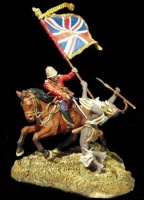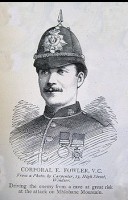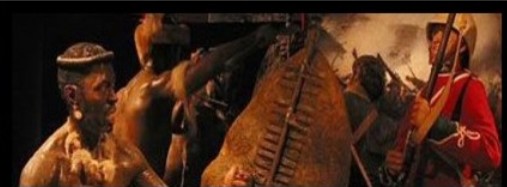| Latest topics | » The Pictorial World - March 15th 1879 Yesterday at 1:13 pm by ben2000 » The lost diary of Pvt James Owen Thu Jul 25, 2024 12:03 pm by miklew » Last of the 24th at Isandhlwana Wed Jul 24, 2024 6:16 pm by John Young » What was the uniform of field marshals/generals in the zulu war? Mon Jul 22, 2024 6:53 am by John Young » Henderson and the NNH at Rorke's Drift  Sat Jul 20, 2024 12:17 pm by SRB1965 » Capt. D. Hayes 1/3rd Regt., NNC Thu Jul 18, 2024 11:11 am by Julian Whybra » The Wrecked Camp Wed Jul 17, 2024 4:33 pm by Julian Whybra » Private N/N John Robert Branch 90th Regiment and his discovered diary Mon Jul 15, 2024 8:53 pm by 1879graves » Private John Scott 24th Regiment a fugitive at large Sun Jul 14, 2024 12:06 pm by 1879graves » 90th foot sgt T. Collins 214 Sun Jul 14, 2024 10:57 am by johnman » Baron Von Steitencron Wed Jul 10, 2024 3:10 pm by Julian Whybra » Sgt Joseph Windridge, Defender of Rorke's Drift - Memorial Tue Jul 09, 2024 3:15 am by 90th » Writing advice Sun Jul 07, 2024 4:04 pm by Julian Whybra » South Africa 1877-79, 1 clasp, 1877-8-9 (4389 Fr. Sergt. S. Smith. O/2. Bde. R.A.) Sun Jul 07, 2024 9:30 am by rai » The trashing of the Zulu monument to the brave warriors at Isandlawana March 12, 2024 has been blamed on scrap metal scavengers. Thu Jul 04, 2024 7:41 pm by ADMIN» The Goodwill Zulu Festival: Celebrating the Welsh and KwaZulu Natal Shared Heritage. Thu Jul 04, 2024 7:27 pm by ADMIN» Any nominal role of G Coy 2/24th regiment  Thu Jul 04, 2024 11:18 am by Wayne » Bassage Diary Thu Jul 04, 2024 9:31 am by Julian Whybra » Prior to Sihayo's Kraal  Thu Jul 04, 2024 9:19 am by 90th » British Fort Locations Thu Jul 04, 2024 3:40 am by 90th » Sergeant 1064 Tom Hick / Hicks G Company 2/24th Regiment Wed Jul 03, 2024 11:05 am by Julian Whybra » A Hungarian soldier in the Zulu War (?) Fri Jun 28, 2024 2:31 pm by Mr M. Cooper » Private 25B/279 Henry Sears Bugler E Company 24th Reg. KIA Isandlwana Thu Jun 27, 2024 1:07 pm by gardner1879 » Hamilton Browne's birthday Fri Jun 21, 2024 9:22 am by Julian Whybra » Zulu "Corps" Thu Jun 20, 2024 6:01 pm by Hobbes » Army Pay Department Personnel Thu Jun 20, 2024 11:49 am by Julian Whybra » Ntshingwayo birth date Sun Jun 16, 2024 11:37 am by Hobbes » Zibhebhu and Cetshwayo's family Wed Jun 05, 2024 9:11 pm by Julian Whybra » Smith's Store/Hotel Wed Jun 05, 2024 6:06 pm by Julian Whybra » Corporal James Frowen Williams F Company.  Tue Jun 04, 2024 5:20 pm by Julian Whybra » Shaka iLembe Sat Jun 01, 2024 1:27 pm by Jon84 » Bugler 1415 Thomas Finn / Flin 90th Regiment  Sat May 25, 2024 11:28 am by johnman » Inspector-General Evelyn Richard Hugh Pollard Tue May 14, 2024 10:13 am by ADMIN» Alfred Fairlie Henderson photographs. Sat May 11, 2024 8:01 am by Julian Whybra » Fairlie's Native Police Thu May 02, 2024 9:12 pm by Hobbes |
| July 2024 | | Mon | Tue | Wed | Thu | Fri | Sat | Sun |
|---|
| 1 | 2 | 3 | 4 | 5 | 6 | 7 | | 8 | 9 | 10 | 11 | 12 | 13 | 14 | | 15 | 16 | 17 | 18 | 19 | 20 | 21 | | 22 | 23 | 24 | 25 | 26 | 27 | 28 | | 29 | 30 | 31 | | | | |  Calendar Calendar |
|
| Top posting users this month | |
| New topics | » The Pictorial World - March 15th 1879 Yesterday at 1:13 pm by ben2000 » The lost diary of Pvt James Owen Thu Jul 25, 2024 12:03 pm by miklew » Last of the 24th at Isandhlwana Wed Jul 24, 2024 5:53 pm by miklew » What was the uniform of field marshals/generals in the zulu war? Sun Jul 21, 2024 12:30 pm by darthvaix » Henderson and the NNH at Rorke's Drift  Fri Jul 19, 2024 1:29 pm by SRB1965 » Capt. D. Hayes 1/3rd Regt., NNC Wed Jul 17, 2024 10:52 pm by Julian Whybra » The Wrecked Camp Sun Jul 14, 2024 8:51 am by 61MECH » The trashing of the Zulu monument to the brave warriors at Isandlawana March 12, 2024 has been blamed on scrap metal scavengers. Thu Jul 04, 2024 7:41 pm by ADMIN» The Goodwill Zulu Festival: Celebrating the Welsh and KwaZulu Natal Shared Heritage. Thu Jul 04, 2024 7:27 pm by ADMIN |
| Zero tolerance to harassment and bullying. | |
Due to recent events on this forum, we have now imposed a zero tolerance to harassment and bullying. All reports will be treated seriously, and will lead to a permanent ban of both membership and IP address.
Any member blatantly corresponding in a deliberate and provoking manner will be removed from the forum as quickly as possible after the event.
If any members are being harassed behind the scenes PM facility by any member/s here at 1879zuluwar.com please do not hesitate to forward the offending text.
We are all here to communicate and enjoy the various discussions and information on the Anglo Zulu War of 1879. Opinions will vary, you will agree and disagree with one another, we will have debates, and so it goes.
There is no excuse for harassment or bullying of anyone by another person on this site.
The above applies to the main frame areas of the forum.
The ring which is the last section on the forum, is available to those members who wish to partake in slagging matches. That section cannot be viewed by guests and only viewed by members that wish to do so. |
| Fair Use Notice | | Fair use notice.
This website may contain copyrighted material the use of which has not been specifically authorised by the copyright owner.
We are making such material and images are available in our efforts to advance the understanding of the “Anglo Zulu War of 1879. For educational & recreational purposes.
We believe this constitutes a 'fair use' of any such copyrighted material, as provided for in UK copyright law. The information is purely for educational and research purposes only. No profit is made from any part of this website.
If you hold the copyright on any material on the site, or material refers to you, and you would like it to be removed, please let us know and we will work with you to reach a resolution. |
| | | Deployment... |  |
| | | Author | Message |
|---|
Guest
Guest
 |  Subject: Deployment... Subject: Deployment...  Wed Feb 06, 2013 7:50 pm Wed Feb 06, 2013 7:50 pm | |
| Hi everyone
When a Zulu regiment attack, how it deploys ?
Each company is in one rank and all the companies of the regiment are one behind the other ?
Or regiment had two companies online on a rank, because the regiment was divided into two wings?
One compagny of each wing on a rank and all the companies of each wing are one behind the other ?
This was done or not?
But how the Zulu companies were deployed ?
Cheers
Pascal |
|   | | John

Posts : 2558
Join date : 2009-04-06
Age : 61
Location : UK
 |  Subject: Re: Deployment... Subject: Re: Deployment...  Wed Feb 06, 2013 8:49 pm Wed Feb 06, 2013 8:49 pm | |
| "The Zulu typically took the offensive, deploying in the well-known "buffalo horns" formation (Zulu: impondo zenkomo). It comprised three elements:
the "horns", or flanking right and left wing elements, to encircle and pin the enemy. Generally the "horns" were made up of younger, greener troops.
the "chest" or central main force which delivered the coup de grace. The prime fighters made up the composition of the main force.
the "loins" or reserves used to exploit success or reinforce elsewhere. Often these were older veterans. Sometimes these were positioned with their backs to the battle so as not to get unduly excited.
Encirclement tactics are not unique in warfare (see Battle of Cannae), and historians note that attempts to surround an enemy were not unknown even in the ritualised battles. The use of separate manoeuvre elements to support a stronger central group is also well known in pre-mechanised tribal warfare, as is the use of reserve echelons farther back. What was unique about the Zulu was the degree of organisation, consistency with which they used these tactics, and the speed at which they executed them. Developments and refinements may have taken place after Shaka's death, as witnessed by the use of larger groupings of regiments by the Zulu against the British in 1879. Missions, available manpower and enemies varied, but whether facing native spear, or European bullet, the impis generally fought in and adhered to the classical buffalo horns pattern.
Organisation and leadership of the Zulu forces
Regiments and corps. The Zulu forces were generally grouped into three levels: regiments, corps of several regiments, and "armies" or bigger formations, although the Zulu did not use these terms in the modern sense. Although size distinctions were taken account of, any grouping of men on a mission could collectively be called an impi, whether a raiding party of 100 or horde of 10,000. Numbers were not uniform but dependent on a variety of factors, including assignments by the king, or the manpower mustered by various clan chiefs or localities. A regiment might be 400 or 4000 men. These were grouped into corps that took their name from the military kraals where they were mustered, or sometimes the dominant regiment of that locality. There were 4 basic ranks: herdboy assistants, warriors, inDunas and higher ranked supremos for a particular mission.
Higher command and unit leadership. Leadership was not a complicated affair. An inDuna guided each regiment, and he in turn answered to senior izinduna who controlled the corps grouping. Overall guidance of the host was furnished by elder izinduna usually with many years of experience. One or more of these elder chiefs might accompany a big force on an important mission, but there was no single "field marshal" in supreme command of all Zulu forces. Regimental izinduna, like the non-coms of today's army, and yesterday's Roman Centurions, were extremely important to morale and discipline. This was shown during the battle of Isandhlwana. Blanketed by a hail of British bullets, rockets and artillery, the advance of the Zulu faltered. Echoing from the mountain, however, were the shouted cadences and fiery exhortations of their regimental izinduna, who reminded the warriors that their king did not send them to run away. Thus encouraged, the encircling regiments remained in place, maintaining continual pressure, until weakened British dispositions enabled the host to make a final surge forward. (See Morris ref belo
"The Washing of the Spears"). |
|   | | littlehand

Posts : 7076
Join date : 2009-04-24
Age : 55
Location : Down South.
 |  Subject: Re: Deployment... Subject: Re: Deployment...  Wed Feb 06, 2013 11:11 pm Wed Feb 06, 2013 11:11 pm | |
| |
|   | | Guest
Guest
 |  Subject: Re: Deployment... Subject: Re: Deployment...  Thu Feb 07, 2013 5:06 am Thu Feb 07, 2013 5:06 am | |
| Hi and thank you guys, but I was talking about the tactical deployment of companies in a regiment ...
Cheers
Pascal |
|   | | | | Deployment... |  |
|
Similar topics |  |
|
| | Permissions in this forum: | You cannot reply to topics in this forum
| |
| |
| |
